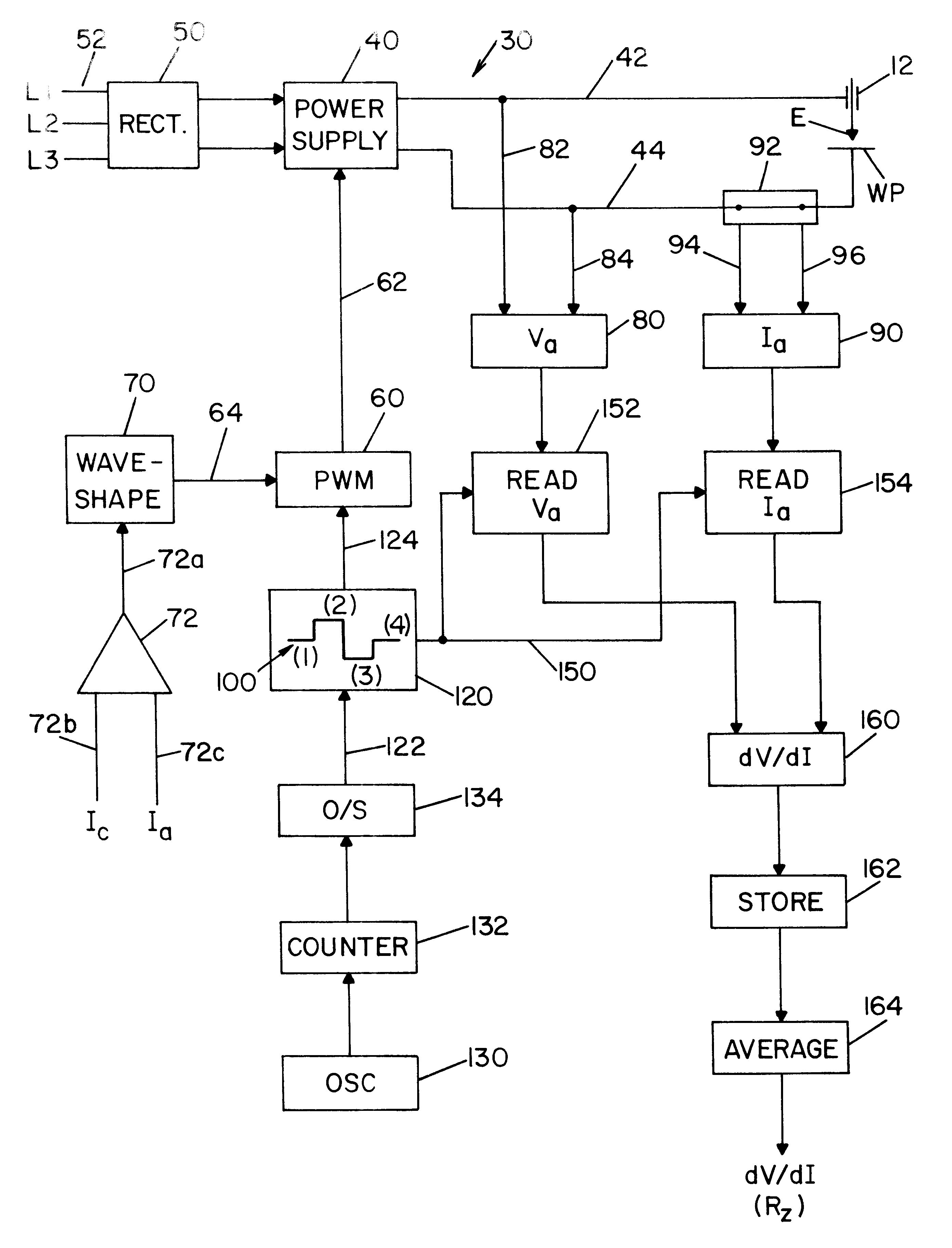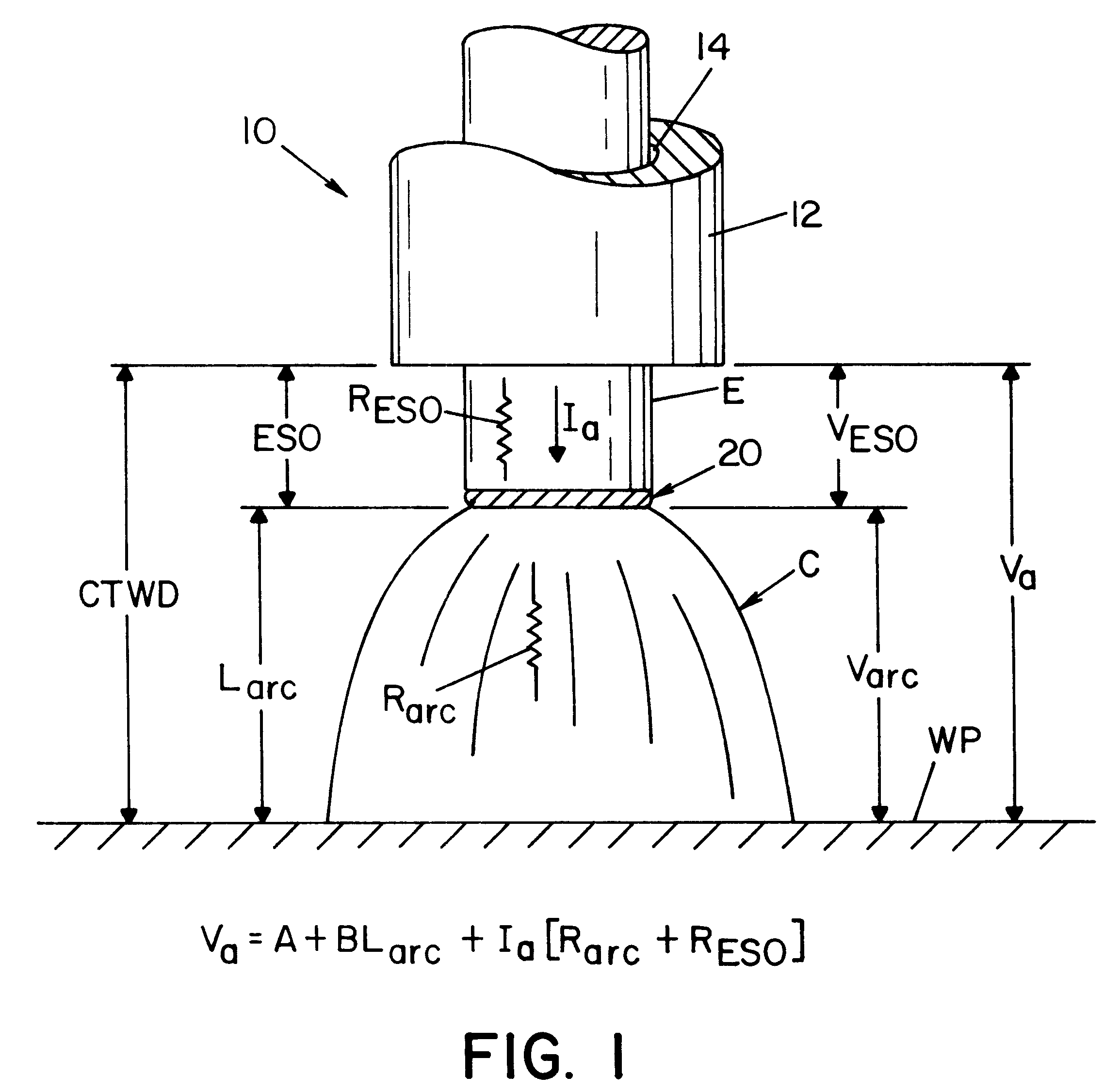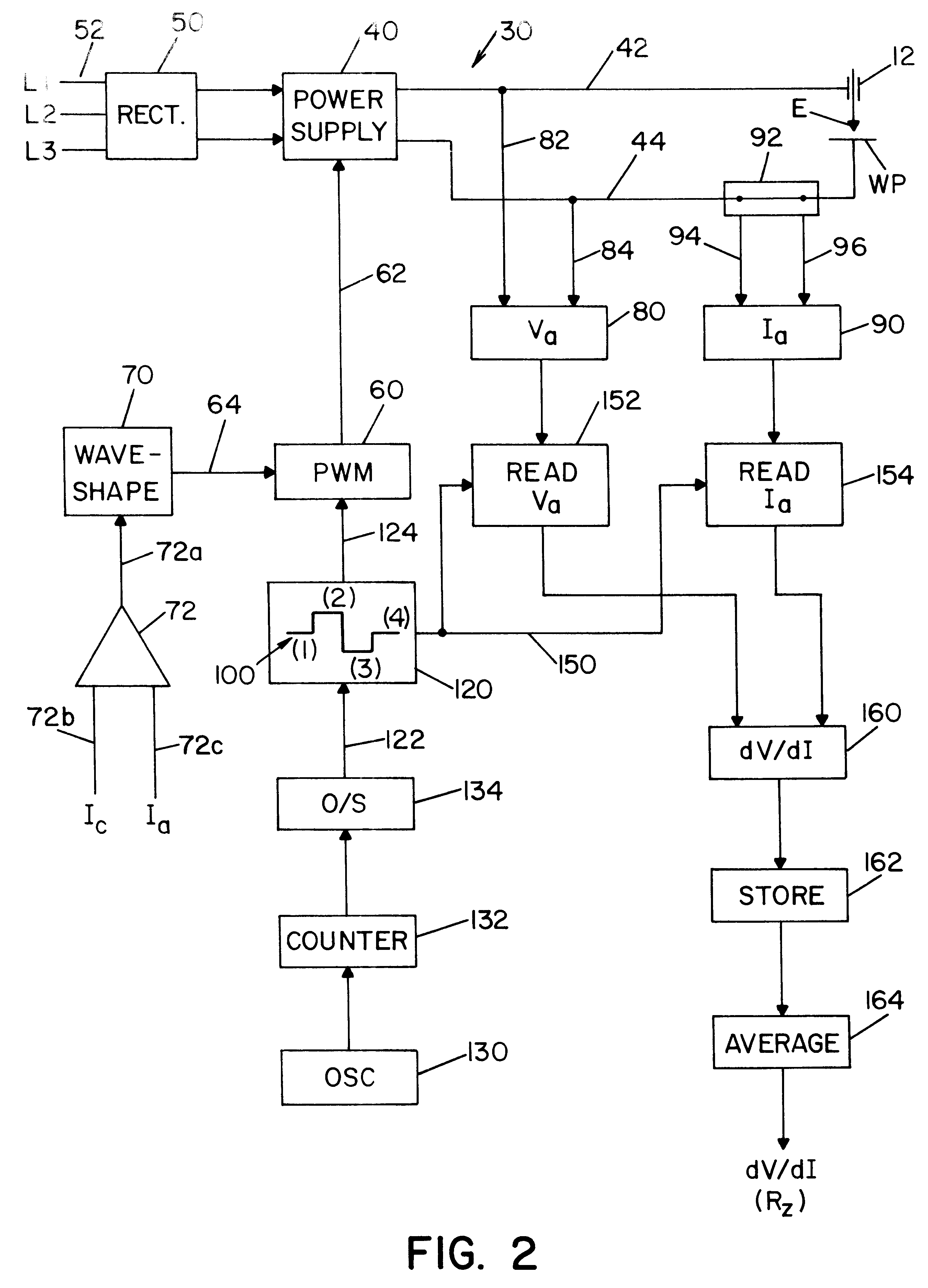Method of controlling arc welding processes and welder using same
a technology of arc welding and control arrangement, which is applied in the direction of arc welding apparatus, welding equipment, manufacturing tools, etc., can solve the problems of inability to accurately obtain control function, inability to control the dc gmaw welding process based on electrode stickout or ctwd, and inherent limitations of the control arrangement using the volt/ampere characteristics curve for the process, etc., to achieve accurate control function
- Summary
- Abstract
- Description
- Claims
- Application Information
AI Technical Summary
Benefits of technology
Problems solved by technology
Method used
Image
Examples
Embodiment Construction
Referring now to the drawings wherein the showings are for the purpose of illustrating the preferred embodiment of the invention only and not for the purpose of limiting same, FIG. 1 illustrates an electric arc welding process 10 wherein contact tip 12 has an opening 14 through which is advanced steel electrode E toward a ferrous workpiece WP. The welding metals are steel in the preferred embodiment; however, other metals, such as aluminum, have been welded using the invention. Between the end of the electrode and the workpiece is an electric arc C. In practice, electric energy is directed by contact tip 12 through electrode E to create arc C to melt the end of the electrode and causes transfer of metal either by spray, short circuit or globular transfer. In the welding process, the distance between tip 12 and workpiece WP is CTWD, which is the system of electrode stickout ESO and the arc length L.sub.arc. Welding voltage V.sub.arc is divided into voltage across electrode V.sub.ESO ...
PUM
| Property | Measurement | Unit |
|---|---|---|
| Fraction | aaaaa | aaaaa |
| Time | aaaaa | aaaaa |
| Length | aaaaa | aaaaa |
Abstract
Description
Claims
Application Information
 Login to View More
Login to View More - R&D
- Intellectual Property
- Life Sciences
- Materials
- Tech Scout
- Unparalleled Data Quality
- Higher Quality Content
- 60% Fewer Hallucinations
Browse by: Latest US Patents, China's latest patents, Technical Efficacy Thesaurus, Application Domain, Technology Topic, Popular Technical Reports.
© 2025 PatSnap. All rights reserved.Legal|Privacy policy|Modern Slavery Act Transparency Statement|Sitemap|About US| Contact US: help@patsnap.com



